Black hole | ||||
What is a black hole? |  Automatic translation Automatic translation | Updated June 01, 2013 | ||
Black holes are massive objects whose gravitational field is so intense that it prevents any form of matter or radiation to escape. | Consideration since the 18th century, the theory supporting the existence of black holes, states that are objects so dense that its escape velocity exceeds the speed of light. Image: V. Beckmann (NASA's GSFC) et al., ESA | 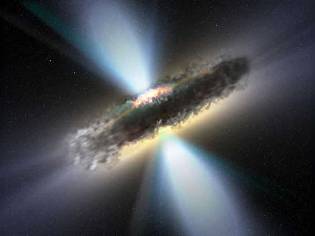 | ||
In search of black holes | ||||
Astronomers have long searched for how quasars, these strange objects, could produce as much energy while being so small. Quasars exist today, they shine so, from a distant past. Relativists advanced explanation of the gravitational collapse. | He thought that something, a mysterious force of nature prevented them from forming black holes. Wheeler still exploring this path and supports the ideas of Oppenheimer. | 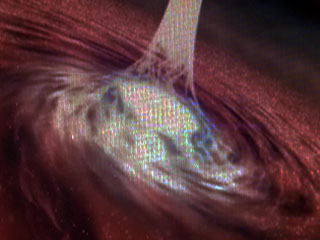 Image: A quasar is a source of energy the most powerful of the universe, a great cauldron of glowing gas that gives off more light than 1,000 galaxies. It is a supermassive black hole, a colossal size as dense as a billion suns, always aspiring stars whole, 1000 masses like the Sun per year. | ||
The center of the Milky Way | ||||
The Milky Way is the central region of our galaxy. Infrared image below shows the cons exact center of our galaxy, known as the Central Molecular Zone and purple, the radio arc of the galactic center. | It can occur at that time, a reaction in which neutral meson decays, produce gamma photons. Image: In this picture we see the exact center of our galaxy, known as the Central Molecular Zone and purple, the radio arc of the galactic center. | 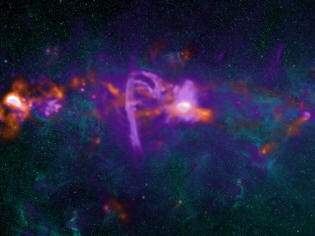 | ||
Giant ring of black holes | ||||
This stunning composite image of Arp 147, showing two interacting galaxies, located about 430 million light years from Earth. This composite image pink, X-rays taken by Chandra X-ray Observatory at NASA, and optical data (red, green, blue), Hubble Space Telescope, produced by the Space Telescope Science Institute, or STScI. Arp 147 (right) contains the remains of a spiral galaxy, punctured by the collision with the elliptical galaxy located on the left. This meeting has left a wave of stars that stands today as a blue ring, housing young massive stars. In a few million years these stars explode as supernovae, leaving behind, neutron stars and black holes. The nine X-ray sources (pink), scattered around the blue ring in Arp 147, are so bright they could generate black holes, ten to twenty times the mass of the sun. An X-ray source is also visible in the nucleus of the galaxy pink, the center of the image. This source could also be powered by a supermassive black hole. | Other objects, unrelated Arp 147 are also visible on the image, especially in the background, above and left of the galaxy pink, you can see the source of a red quasar. The infrared observations of the Spitzer telescope and ultraviolet observations from NASA Galaxy Evolution (GALEX), were used to estimate the rate of star formation in the ring. From these data, combined with the use of models on the evolution of binary stars, the authors concluded that the stars most intense, have completed their training in approximately 15 million years. These results were published on 1 October 2010 in the Astrophysical Journal. The authors are, Saul Rappaport and Alan Levine of the Massachusetts Institute of Technology, David Pooley Eureka Scientific and Benjamin Steinhorn, also of MIT. Image: In this image of Arp 147, two galaxies are interacting with many future black holes. Credit: X-ray: NASA/CXC/MIT/S, Rappaport et al., Optical: NASA/STScI | 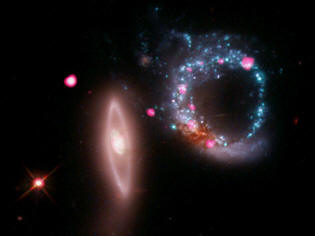 | ||
"The data available on this site may be used provided that the source is duly acknowledged."



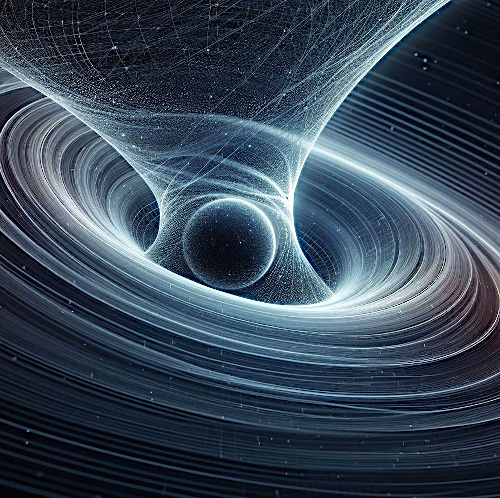 The curvature of time, a non-intuitive concept!
The curvature of time, a non-intuitive concept!
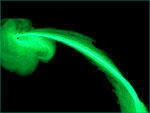 Escape or escape speed
Escape or escape speed
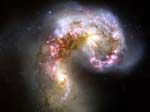 Fusion of galaxies and black holes
Fusion of galaxies and black holes
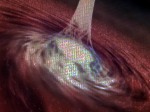 Quasars or nuclei of galaxies
Quasars or nuclei of galaxies
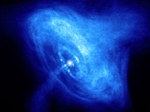 Neutron stars and pulsars
Neutron stars and pulsars
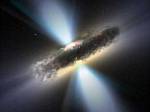 Black hole, massive star residue
Black hole, massive star residue
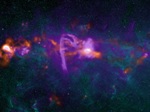 Sagittarius A, our black hole in 2013
Sagittarius A, our black hole in 2013
 Journey to the center of our galaxy
Journey to the center of our galaxy
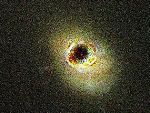 In search of black holes
In search of black holes
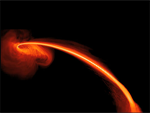 A black hole swallowing a star
A black hole swallowing a star
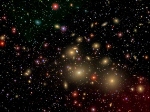 Super giant black hole in NGC 1277
Super giant black hole in NGC 1277
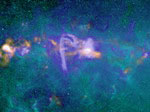 Central area of the Milky Way
Central area of the Milky Way
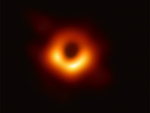 The first image of a black hole
The first image of a black hole